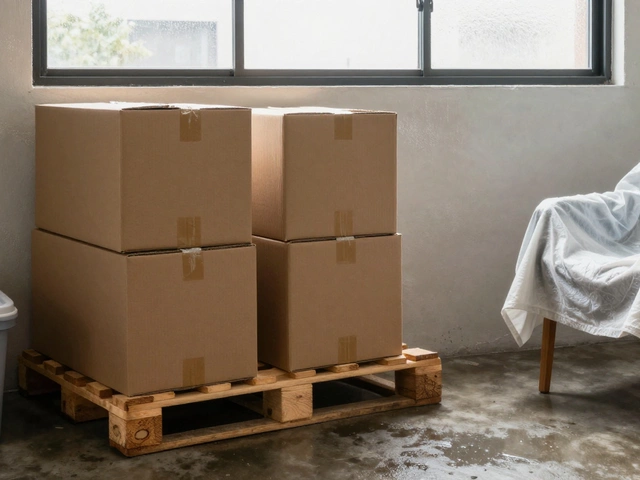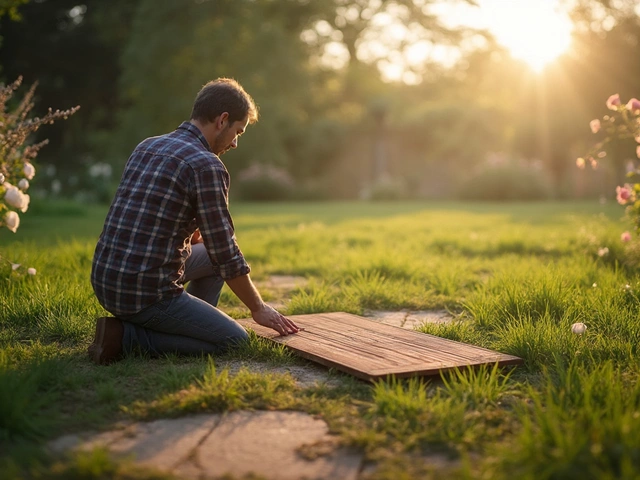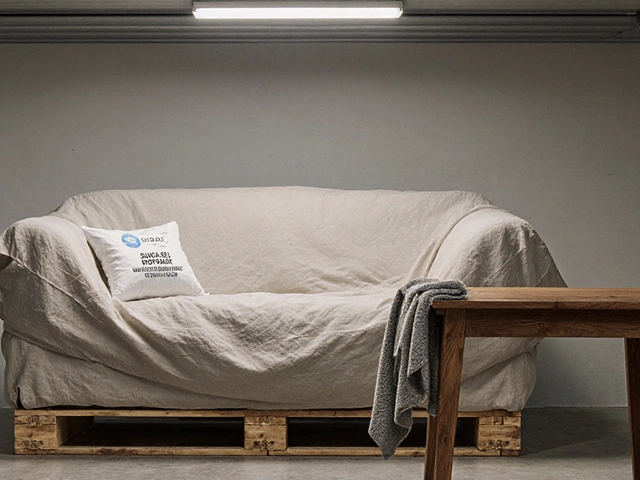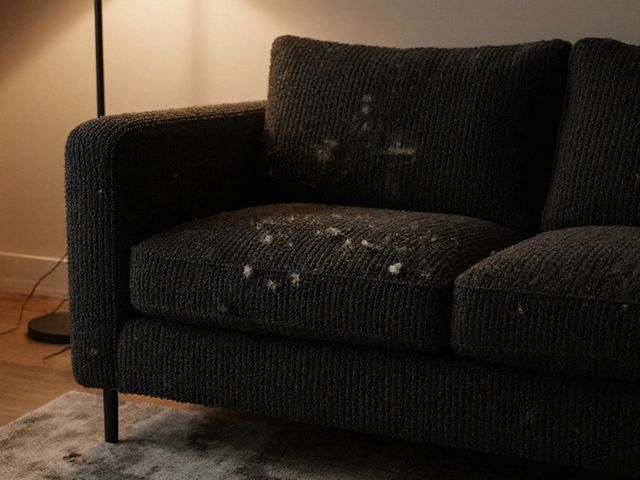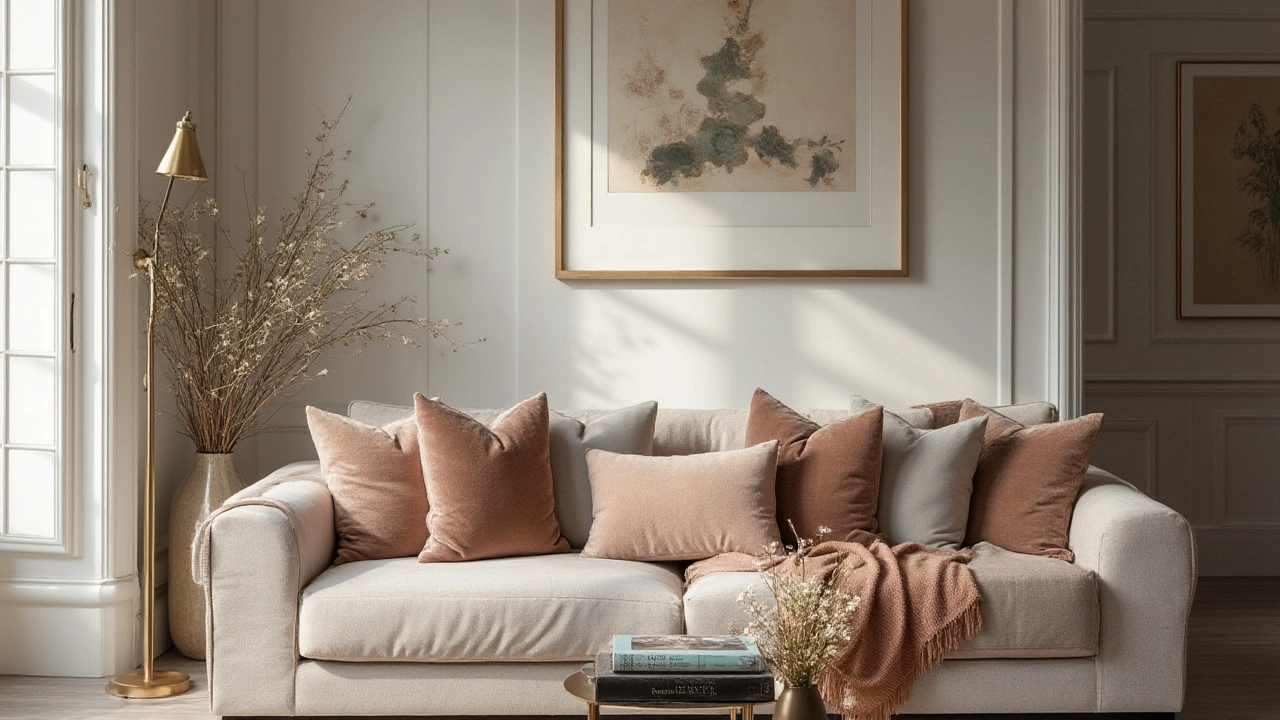 27
Jul,2025
27
Jul,2025
If you’ve ever walked into a designer showroom and felt a pang of envy at the stunning sofas on display, you’re definitely not alone. There’s this undeniable pull when a sofa just looks—well, expensive. Yet, plenty of pricier sofas actually miss the mark, while a few budget finds manage to exude that elusive air of luxury. So what gives? Spoiler: It’s way more than just the price tag or a random cushion tossed on at the last second. Want to know the insider tricks designers don’t rush to share? You’re in the right place.
The Fabric Factor: What Really Says "Luxury"
Start with the fabric. This is where most high-end sofas truly set themselves apart. Luxury isn’t about flashiness; it’s about the tactile experience—what you feel the moment you sit down or run your hand over the upholstery. Ever noticed how velvet instantly reads "posh"? That’s not an accident. The plushness and depth that velvet brings to a sofa is unparalleled, and it reflects light in a subtle, almost mesmerizing way. Linen, while more casual, whispers sophistication and holds its own in the world of understated elegance. Leather, when it’s full-grain or top-grain and not the synthetic knockoffs, develops a patina as it ages, making the sofa feel more bespoke over time.
On the flip side, scratchy synthetic fibers can look cheap from a mile away, even if the color matches the latest trend. This doesn’t mean you need to remortgage your house for a silk-blend couch. Performance fabrics have come a long way—some are pet- and kid-proof yet still look high-end. The trick is to touch, test, and pay attention to the weight of the fabric. Heavier, tightly-woven materials tend to drape better, resist sagging, and scream quality. If buying online, ask for swatches. Yes, wait a few days before you buy. It’s worth it.
Color plays right into this, too. Highly saturated jewel tones—think emerald green or deep navy—bring depth and look rich. If you’re nervous about color, crisp neutrals like creams, deep grays, or warm taupes signal sophistication and never age badly. What to avoid? Patterns that look mass-produced, super-bright whites that’ll show every spill, or anything shiny in a plastic-feeling way.
“The right fabric can turn a basic sofa into a showstopper,” says interior designer Justina Blakeney.
"Textiles are like the fashion statement of your sofa. Luxe materials, be it velvet or handwoven linen, always look and feel expensive."
Details That Make the Difference
Ever noticed how some sofas look oddly "unfinished" no matter how much they cost? That’s all about the details. Luxury sofas almost always have little touches that set them apart, things you may not even spot at first glance but can’t unsee once you know. We're talking about solid, visible stitching—especially French seams or double-needle work. Cheap sofas often hide their stitches with piping or glue, but real quality likes to show its handiwork. Nailhead trim, when done thoughtfully, spells traditional luxury, while contrast piping makes a mid-century sofa look instantly custom.
Next, check out the legs. Expensive sofas steer clear of those clunky plastic “hidden” legs you see at big box stores. Designers lean into exposed, solid wood or metal legs—sometimes turned or tapered—because this is where you show off craftsmanship. If your current sofa came with plastic feet, don’t despair. You can swap those out for stained wood or brass legs for less than you’d think, and the transformation is wild.
Don’t sleep on cushions, either. Cushion fill says almost as much about a sofa’s price as its fabric. High-end sofas will use a mix of down and foam or offer spring-down cushions, delivering comfort without looking lumpy. Cheaper versions? They rely on lightweight foam that loses shape fast. Want the expensive look even on a budget? Layer cushions with inserts that are slightly larger than the cases. Overstuffed, perfectly plump cushions are a detail that feels deliberate and high-end. Another tip: Go for a "bench" seat (one long cushion rather than two or three segments). It feels sleek and custom, and somehow, every designer swears by it.
If you really want to geek out, check the frame. Hardwood frames—think kiln-dried beech or oak—are the gold standard, while soft woods like pine or particle board sag quickly. If you have a secondhand sofa, you might be able to have it reupholstered and refitted for much less than buying new, especially if it originally had a solid frame.
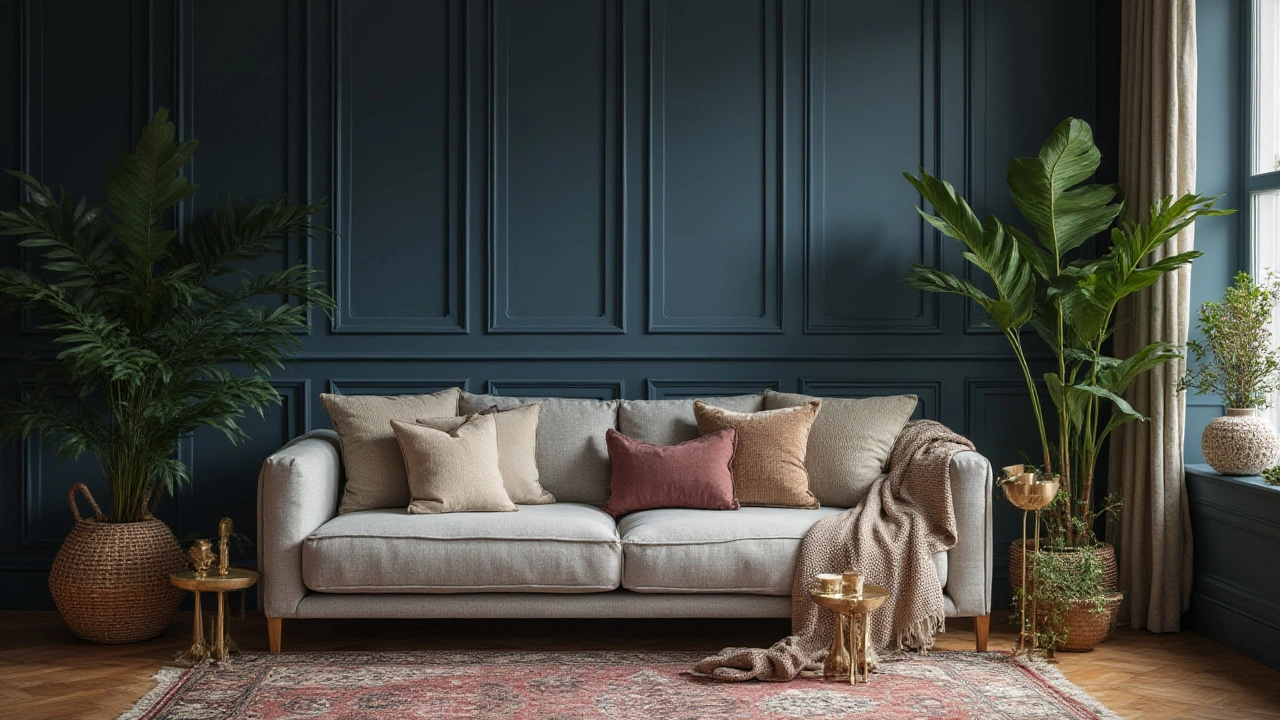
Color Schemes and Styling Tricks
A smart color scheme can elevate even the most basic sofa. The pros know how to use color in a way that looks intentional, not chaotic. If your goal is that Pinterest-worthy living room, stick to a limited color palette. One of the easiest secrets? Match your sofa color with tones found in your room’s rug, curtains, or wall art—just like outfit-matching, but for furniture. Deep blues, cognac leathers, and rich greens add drama and substance, while off-whites and gentle greys feel quietly expensive.
Let’s talk throw pillows and blankets. High-end spaces almost always layer these in threes—three pillows of varying sizes, textures, and patterns, but all unified by a common thread (like color or fabric type). Lucy swears by swapping our pillow covers seasonally. In summer, we go for crisp linen in faded blue-grey. In winter, we switch to deep velvet in burnt orange. The change keeps things fresh, and it tricks the eye into seeing your sofa as "new." Here's the trick: Stick with fewer pillows, but go larger and heavier if you can. Avoid those tiny, thin poly-fill cushions that come with a set—they flatten fast and cheapen the look.
Blankets shouldn’t look like you stole them from a college dorm. Instead, opt for a chunky knit or cashmere-like throw, draped over the armrest or folded neatly at one end. A bit of mess is okay, but not too much. The aim is intentional comfort. Natural materials (like cotton, wool, linen) always photograph better and feel more luxe in person.
Lighting and positioning add the final touch. Position your sofa near a window if you can, so natural light brings out the fabric’s texture. Add a side table with a hefty lamp or a brass accent. Small changes with a table, an oversized coffee book, or a tray of candles can turn the area into a styled moment—think Instagram, not showroom. Layered lighting (overhead, table lamp, downlight) makes the sofa area glow in a way that looks very high-end in photos and real life.
Smart Buys and Budget Myths
You don’t have to empty your savings to land a sofa that looks expensive. That myth lingers, but the smartest decorators know where to save and where to splurge. Want to know what makes the biggest difference for your money? It’s usually getting the proportions and color right. A $500 sofa with well-proportioned arms and a custom-looking fabric in an elegant shade can absolutely outshine a $5000 sofa in garish faux leather or a muddy hue. Choosing a classic shape also helps; funky shapes might grab attention now, but classic lines always look "intentional" and expensive.
Here’s a tip that doesn’t get enough airtime: updating hardware and feet. If your sofa’s legs are looking scuffed or plastic, swap them. There are online shops selling mid-century or tapered wooden legs in under 15 minutes. The cost? Often under $40. The effect? Priceless. Another under-the-radar trick: add a tailored skirt (think fitted, not ruffled) if your sofa shows off unattractive legs or if you want that traditional "English roll arm" vibe.
Secondhand scores can be your ticket to luxury on a budget. Estate sales, vintage shops, or Facebook Marketplace often hide gems with old-school craftsmanship underneath tired fabric. If the structure (frame, springs) is good, you can reupholster for much less than buying new. Also, don’t judge a sofa in a bad fabric or color—if it’s sturdy and handmade, you could end up with something worth ten times what you paid after a little facelift.
Here’s some data to chew on, straight from a 2024 survey by Furniture Today:
| Feature | Percent of Designers Who Say It Makes a Sofa Look Expensive |
|---|---|
| High-quality fabric | 90% |
| Solid wood frame | 78% |
| Bench cushion | 70% |
| Visible craftsmanship/stitching | 65% |
| Neutral or jewel-toned colors | 62% |
One last thing—don’t go overboard with matchy-matchy sets. High-end designers almost always mix things up: a plush sofa with a stone coffee table, metallic accents, art on the wall that tells a story. The room feels collected, not purchased in one swing. That’s your secret sauce.
Want your sofa to feel like a splurge every time you come home? It’s a wild mix of the expensive sofa fabric, those tiny details, a smart color story, and a little creative hustling where it counts. Pick your battles, layer in your own style, and don’t stress so much about what’s trending this week. If you love it and it feels inviting—that’s real luxury right there.
